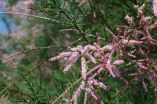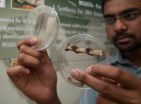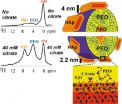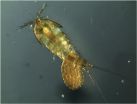(Press-News.org) The recent field of invasion biology faces a new challenge as 19 eminent ecologists issue a call to "end the bias against non-native species" in the journal Nature.
Often called aliens, hitchhikers or invasives, some scientists say that non-native species could just as easily be coined "abductees" whose transport links to activities by humans.
The authors of the Nature comments section note that assumptions that "introduced species" offer only deleterious impacts are misguided and "that human-induced impacts, such as climate change, nitrogen eutrophication, urbanization and land use change are making the native-versus-alien species dichotomy in conservation increasingly meaningless."
Mark Davis, lead author and professor with Macalester College in Saint Paul, Minnesota, says that a nativism perspective – native species equals good, non-native species equals bad – has dominated conservation efforts over the past few decades. He points to a number of ecologists, "including those who rightly could be called legendary for their contributions to the field over the past decades, who believe there has been way too much ideology and not enough good science associated with the anti-non-native species perspective."
The authors believe that a shift in the field is needed to consider outcomes and impacts of an organism on an environment rather than focus on native origins.
"Scientists who malign introduced plants and animals for thriving under favorable conditions seem to be disregarding basic ecological and evolutionary principles," say Matthew Chew, an ecologist and historian of invasion biology, and Julie Stromberg, a plant ecologist, with Arizona State University. "Evaluating whether a species 'belongs' in a particular place is more complicated than just finding out how and when it arrived."
Scientific studies show that while some introduced species have resulted in extinctions, not all natives are beneficial, as in the example of the Pine Bark beetle, which is decimating North American pine forests.
Chew and Stromberg have studied the impact of the non-native species in riparian ecosystems, most particularly tamarisk trees in the Southwest United States. Introduced to control erosion, Chew and Stromberg consider its continued perception as a pest species, water consumer and invader overplayed, while research shows its ecological role and ecosystem services have been undervalued. They point to outmoded perspectives and continued deference to outdated science as playing strong roles in negative perceptions of the species and intensive investment in eradication efforts. Recent discoveries have found that tamarisk in fact provides nesting habitat for birds, including the endangered Southwestern willow flycatcher, and that regional water management and climate change increasingly favor tamarisk over once-common cottonwoods and willows.
While the introduction of non-native species was noted as early as the 1620s, by Sir Francis Bacon, the field of invasion biology arose as an ecological approach as recently as the 1980s and 90s, inspired by Charles Elton's 1958 The Ecology of Invasions by Animals and Plants. More recent appraisals of Elton's research and publications by prominent ecologists now prompt a call for a change, these authors believe: "Invasion implies so many values. We need to consider the impact of these terms and approaches and how they affect scientific perception, public perception, and in turn, decision-making in conservation and restoration management."
INFORMATION:
In addition to Davis, Chew and Stromberg, authors include Richard Hobbs, University of Western Australia, Perth; Ariel Lugo, International Institute of Tropical Forestry, Rio Piedras, Puerto Rico; John Ewel, University of Florida, Gainesville; Geerat Vermeij and Scott Carroll, University of California, Davis; James Brown, University of New Mexico, Albuquerque; Michael Rosenzweig, University of Arizona, Tucson; Mark Gardener, Charles Darwin Foundation, Puerto Ayora, Galapagos, Ecuador; Ken Thompson and Philip Grime, University of Sheffield, UK; Steward Pickett, Cary Institute of Ecosystem Studies, Millbrook, New York; Peter Del Tredici, Harvard University, Cambridge Massachusetts; Katharine Suding, University of California, Berkeley; Joan G. Ehrenfeld, Rutgers University, Rutgers; Joseph Mascaro, Smithsonian Tropical Research Institute, Stanford, California; and John C. Briggs, University of South Florida, Tampa.
Ecology biased against non-native species?
Nature authors: End bias, focus on impact, function rather than origin
2011-06-09
ELSE PRESS RELEASES FROM THIS DATE:
Saving wildlife with forensic genetics
2011-06-09
Wildlife face many threats with spreading urbanization, including habitat loss and inbreeding when populations become fragmented and isolated. It doesn't help that there is a billion-dollar international industry dedicated to the illegal trafficking of wild animals or wild animal parts.
The Conservation Genetics Lab at the University of Arizona is working to conserve and protect wild animals around the world.
"Our work here deals with using genetics for wildlife conservation," said Ashwin Naidu, a doctoral candidate in the School of Natural Resources and the Environment.
One ...
Researchers discover superatoms with magnetic shells
2011-06-09
RICHMOND, Va. (June 8, 2011) – A team of Virginia Commonwealth University scientists has discovered a new class of 'superatoms' – a stable cluster of atoms that can mimic different elements of the periodic table – with unusual magnetic characteristics.
The superatom contains magnetized magnesium atoms, an element traditionally considered as non-magnetic. The metallic character of magnesium along with infused magnetism may one day be used to create molecular electronic devices for the next generation of faster processors, larger memory storage and quantum computers.
In ...
Lifelong gap in health between rich and poor set by age 20
2011-06-09
"We can't buy our way out of ageing," says Nancy Ross, a McGill geography professor. "As we get older we start to have vision problems, maybe some hearing loss, maybe lose some mobility – ageing is a kind of a social equalizer."
Ross is the lead author of a new study about how socio-economic and educational status affects Canadians' health-related quality of life over the course of a lifetime.
"My research looks at how poverty and social disadvantage affect your health status. Our work was about using social circumstances as a lens to look at how people's quality ...
Citrate key in bone's nanostructure
2011-06-09
AMES, Iowa - Bone is one of nature's surprising "building materials." Pound-for-pound it's stronger than steel, tough yet resilient. Scientists at the U.S. Department of Energy's Ames Laboratory have identified the composition that gives bone its outstanding properties and the important role citrate plays, work that may help science better understand and treat or prevent bone diseases such as osteoporosis.
Using nuclear magnetic resonance (NMR) spectroscopy, Ames Laboratory scientist and Iowa State University chemistry professor Klaus Schmidt-Rohr and his colleagues ...
Will psych majors make the big bucks?
2011-06-09
A new crop of college graduates have just landed on the job market. Right now they're probably just hoping to get any job, if at all. However, for psychology majors, the salary outlook in both the short and long term is particularly poor, according to a new study which will be published in an upcoming issue of Perspectives on Psychological Science, a journal of the Association for Psychological Science.
It's generally known that psychology majors don't make a ton of money when they're starting out; they're not like engineering students, many of whom go straight into a ...
How cells' sensing hairs are made
2011-06-09
Body cells detect signals that control their behavior through tiny hairs on the cell surface called cilia. Serious diseases and disorders can result when these cilia do not work properly. New research from UC Davis published this week in the journal Nature Cell Biology provides new insights into how these cilia are assembled.
"It's a basic discovery, but with implications for understanding disease," said Jonathan Scholey, professor of molecular and cellular biology at UC Davis and senior author of the study. Understanding how cilia are assembled and function can help ...
'Thermal pollution' in rivers not fully mediated by gravel augmentation
2011-06-09
Although adding gravel to a river to replace lost sediments won't likely cool the whole river channel, it can create cool water refuges that protect fish from thermal pollution, according to a U.S. Forest Service Pacific Northwest Research Station study.
The research—featured in the June 2011 issue of Science Findings, a monthly publication of the station—is among the first to explore the interplay between sub-surface water flow and temperature in large rivers and is helping to guide river restoration strategies in the Pacific Northwest.
In the study, which began ...
Eating a high-fat diet may rapidly injure brain cells that control body weight
2011-06-09
Obesity among people who eat a high-fat diet may involve injury to neurons, or nerve cells, in a key part of the brain that controls body weight, according to the authors of a new animal study. The results will be presented Tuesday at The Endocrine Society's 93rd Annual Meeting in Boston.
"The possibility that brain injury may be a consequence of the overconsumption of a typical American diet offers a new explanation for why sustained weight loss is so difficult for most obese individuals to achieve," said presenting author Joshua Thaler, MD, PhD, a faculty member with ...
Can evolution outpace climate change?
2011-06-09
Animals and plants may not be able to evolve their way out of the threat posed by climate change, according to a UC Davis study of a tiny seashore animal. The work was published today (June 8) in the journal Proceedings of the Royal Society B.
The tide pool copepod Tigriopus californicus is found from Alaska to Baja California — but in a unique lab study, the animals showed little ability to evolve heat tolerance.
"This is a question a lot of scientists have been talking about," said study co-author Eric Sanford, an associate professor of evolution and ecology at UC ...
UAB first in US with cell-processing workstation
2011-06-09
BIRMINGHAM, Ala. – The University of Alabama at Birmingham has taken a significant step toward making sophisticated cell therapy a part of patient care with its acquisition of the first cell-processing workstation (CPWS) from SANYO North America Corporation (SANYO) in the United States.
Richard Marchase, Ph.D., vice president for Research and Economic Development at UAB, says "UAB has a rich history of breaking ground in the cell-therapy arena. We are thrilled that we were able to be the first in the United States to use SANYO's CPWS. This will add to our world-class ...
LAST 30 PRESS RELEASES:
Making lighter work of calculating fluid and heat flow
Normalizing blood sugar can halve heart attack risk
Lowering blood sugar cuts heart attack risk in people with prediabetes
Study links genetic variants to risk of blinding eye disease in premature infants
Non-opioid ‘pain sponge’ therapy halts cartilage degeneration and relieves chronic pain
AI can pick up cultural values by mimicking how kids learn
China’s ecological redlines offer fast track to 30 x 30 global conservation goal
Invisible indoor threats: emerging household contaminants and their growing risks to human health
Adding antibody treatment to chemo boosts outcomes for children with rare cancer
Germline pathogenic variants among women without a history of breast cancer
Tanning beds triple melanoma risk, potentially causing broad DNA damage
Unique bond identified as key to viral infection speed
Indoor tanning makes youthful skin much older on a genetic level
Mouse model sheds new light on the causes and potential solutions to human GI problems linked to muscular dystrophy
The Journal of Nuclear Medicine ahead-of-print tip sheet: December 12, 2025
Smarter tools for peering into the microscopic world
Applications open for funding to conduct research in the Kinsey Institute archives
Global measure underestimates the severity of food insecurity
Child survivors of critical illness are missing out on timely follow up care
Risk-based vs annual breast cancer screening / the WISDOM randomized clinical trial
University of Toronto launches Electric Vehicle Innovation Ontario to accelerate advanced EV technologies and build Canada’s innovation advantage
Early relapse predicts poor outcomes in aggressive blood cancer
American College of Lifestyle Medicine applauds two CMS models aligned with lifestyle medicine practice and reimbursement
Clinical trial finds cannabis use not a barrier to quitting nicotine vaping
Supplemental nutrition assistance program policies and food insecurity
Switching immune cells to “night mode” could limit damage after a heart attack, study suggests
URI-based Global RIghts Project report spotlights continued troubling trends in worldwide inhumane treatment
Neutrophils are less aggressive at night, explaining why nighttime heart attacks cause less damage than daytime events
Menopausal hormone therapy may not pose breast cancer risk for women with BRCA mutations
Mobile health tool may improve quality of life for adolescent and young adult breast cancer survivors
[Press-News.org] Ecology biased against non-native species?Nature authors: End bias, focus on impact, function rather than origin



